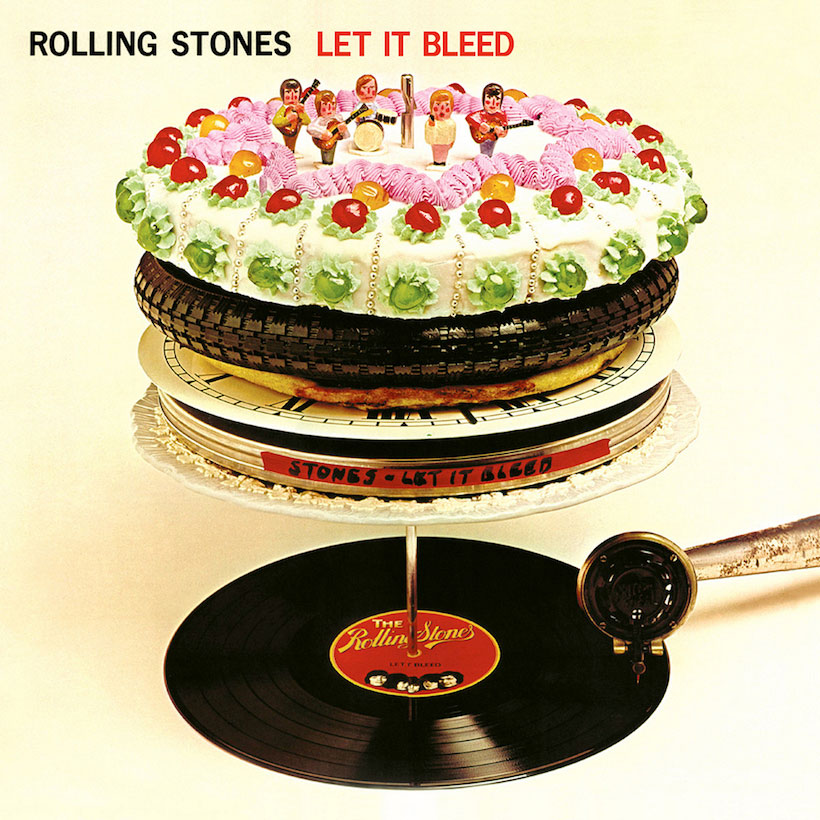It was on December 5, 1969, the day that the Stones left Muscle Shoals, having recorded some tracks for what would be their next album (Sticky Fingers), that Let It Bleed, a name conjured up by Keith, was released in Britain. It was the day that The Stones flew to San Francisco and their ill-fated appearance at Altamont.
Listen to Let It Bleed on Apple Music and Spotify.
Let It Bleed, their second Jimmy Miller-produced album, had been released in the US a week earlier. It was recorded during Brian Jones’s final months with the band, but there’s precious little of him anywhere on the album; it was also their first record to feature new guitarist Mick Taylor. The Stones’ album was up against stiff opposition for chart honors as the Beatles had released Abbey Road two months earlier and Led Zeppelin’s second album had come out a few weeks before.
Defining songs in the Stones’ canon
It was largely recorded at Olympic Studios in London and Elektra Studios in Los Angeles between February and October 1969 and it includes three absolute classics in “Gimme Shelter,” “You Can’t Always Get What You Want,” and “Midnight Rambler.”
It was around the end of October, while Mick and Keith were finishing off tracks for Let It Bleed in Los Angeles that singer, Merry Clayton was awoken at 1 am to do the backup vocals on “Gimme Shelter,” it proved to be one of the defining songs in the Stones’ extensive canon.
On another night, fiddle player Byron Berline was recorded overdubbing “Country Honk” on the pavement of Wilshire Boulevard, leaning against a limo, with a car horn acting as his signal to begin playing. Other musicians that appear on the record are, Ian Stewart on piano, Nicky Hopkins plays piano and organ, along with Ry Cooder on mandolin, former Traffic man, Dave Mason on guitar, Leon Russell on piano, Bobby Keys plays sax while Nanette Workman and Madeline Bell sing backing vocals.
“Honky Tonk Women” was recorded during the sessions for the album, but was not included, but its B-side “You Can’t Always Get What You Want” is another of the album’s highlights. It features the 60-voice London Bach choir that was arranged by Wrecking Crew veteran, Jack Nitzsche and along with The Stones is Al Kooper, playing piano, organ, and French horn
“The Stones have never done anything better”
In late August 1969, Robert Brownjohn showed Keith sketches of the cover idea for the new album that had the working title of, “Automatic Changer.” Keith was very receptive to Brownjohn’s ideas and it was planned to shoot it a week later at a cost of around £1,000, a lot of money for the time. A young home economist and later celebrity chef, Delia Smith, who made the now-iconic cake, said, “I was working then as a jobbing home economist, with a food photographer who shot for commercials and magazines. I’d cook anything they needed. One day they said they wanted a cake for a Rolling Stones record cover, it was just another job at the time. They wanted it to be very over-the-top and as gaudy as I could make it!”
While it has become much loved as a cover, at the time Rolling Stone magazine called it, “The crummiest cover art since Flowers.” Although Greil Marcus in the same magazine did say, “An overwhelming record… the Stones have never done anything better.”
The album topped the UK charts on December 20, 1969, but only made No. 3 on the Billboard charts. With the passing of time, it has come to be judged as one of the high points of The Stones’ career. It’s an album that works as an entity, perfect to be listened to at a sitting and demonstrative of the band’s eclectic mix of influences and musical loves. The cover of Robert Johnson’s “Love in Vain” is a testament to their longstanding love affair with the blues.
Let It Bleed (50th Anniversary Limited Deluxe Edition) is out now. Buy it here.




